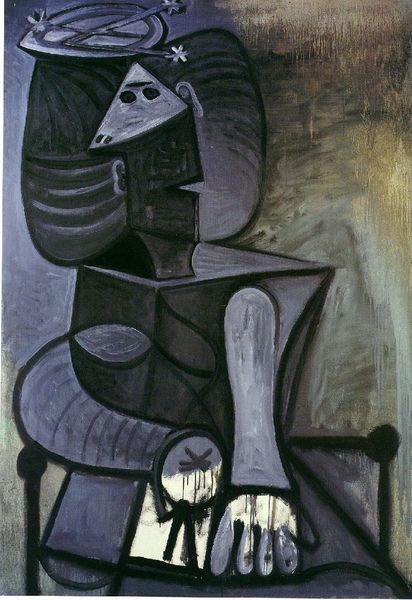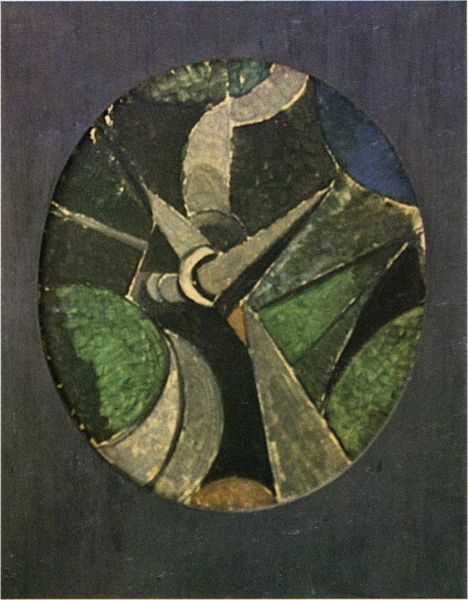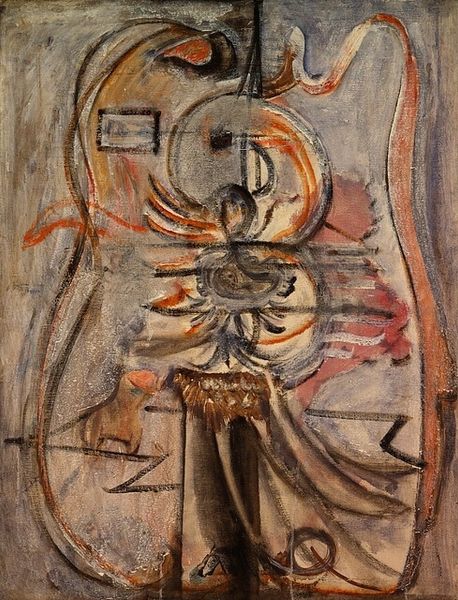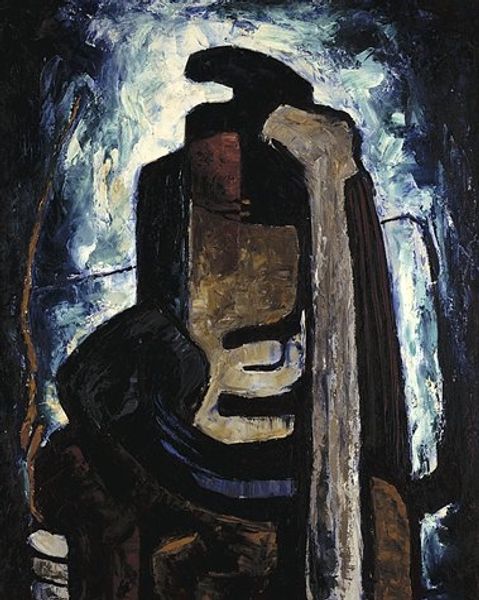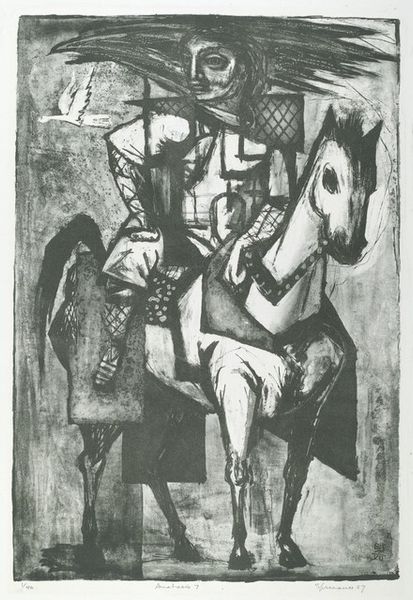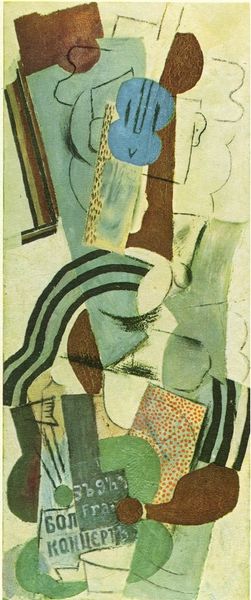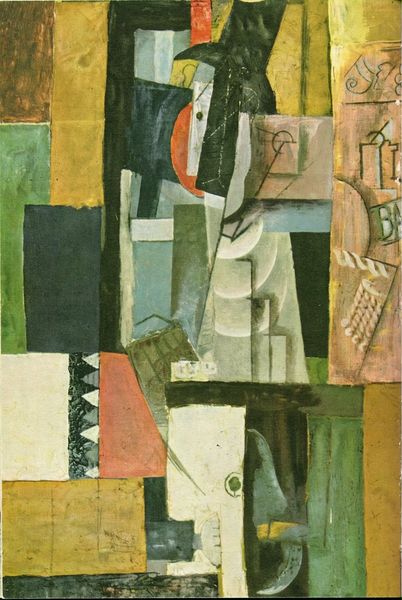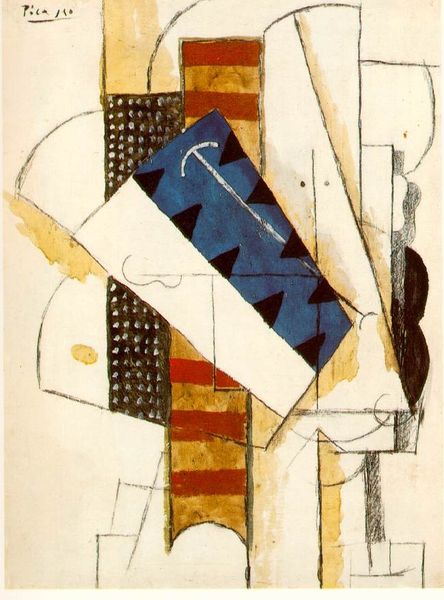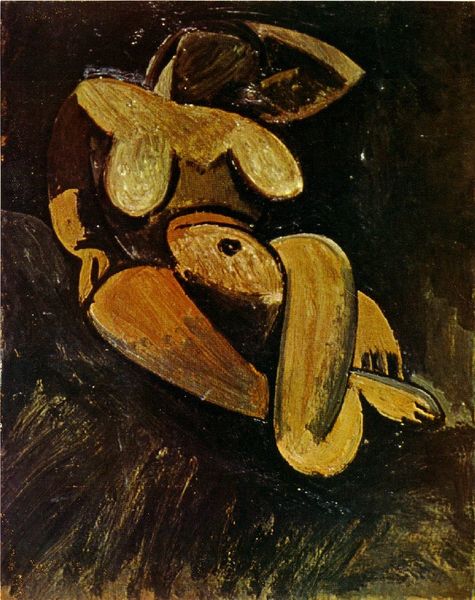
painting, oil-paint
#
portrait
#
cubism
#
abstract painting
#
painting
#
oil-paint
#
painted
#
oil painting
#
geometric
#
abstraction
Copyright: Public domain US
Curator: Let’s take a look at Anatol Petrytsky’s "Abstract Cubistic Composition" from 1923, executed in oil paint. Editor: My first impression is one of somber fragmentation. It feels weighty, almost burdened by its angular forms and muted color palette. Curator: Petrytsky's work is intriguing precisely because he synthesizes Cubist aesthetics with a unique exploration of materials. Notice the thick layering of paint, particularly in the darker areas. It speaks to a fascination with the physical properties of the oil paint itself. We might ask what kind of pigment was accessible or not to a Ukrainian artist at this moment. Editor: That's a good point about access, because from a socio-political perspective, Petrytsky painted this during a tumultuous period in Ukrainian history, sandwiched between revolution and Stalinism. Abstraction itself, at this moment, can be interpreted as a form of resistance, a retreat from representational modes favored by authoritarian regimes and an embrace of the avant-garde's potential for disruption. The fragmentation could mirror the social fracturing occurring at that very time. Curator: It is difficult to interpret it, though, given that Petrytsky seems to have straddled both avant-garde experimentations and stage design. One could certainly investigate what sorts of scenography the artist produced that did or didn’t support political ideology. The formal arrangement reminds me a bit of deconstructed stage props and the manipulation of materials to conjure theatrical space. Editor: And maybe it also gestures toward the ways identities are performed, assembled, and ultimately fragmented under pressure. Look at how the planes intersect and almost collide—this evokes tension and perhaps a commentary on social disharmony of the early Soviet period, including Ukrainian nationalism, though admittedly oblique and hard to read. Curator: Well, considering how Soviet authorities could read meaning into just about anything, perhaps obliqueness was a self-preservation tactic of sorts. To pull back to his handling of material again, look at the way he varies the surface textures – some areas are smooth, others are quite rough and textured. The physical application is crucial, don’t you think? Editor: Yes, though it's worth acknowledging how formalism often falls short when considering artworks produced during politically fraught periods. However, engaging with the materiality reminds us to resist simple iconographic readings. Curator: Indeed. Considering the making and unmaking helps understand it, I think. Editor: It also inspires one to appreciate Petrytsky’s nuanced visual vocabulary given constraints and aspirations.
Comments
No comments
Be the first to comment and join the conversation on the ultimate creative platform.


